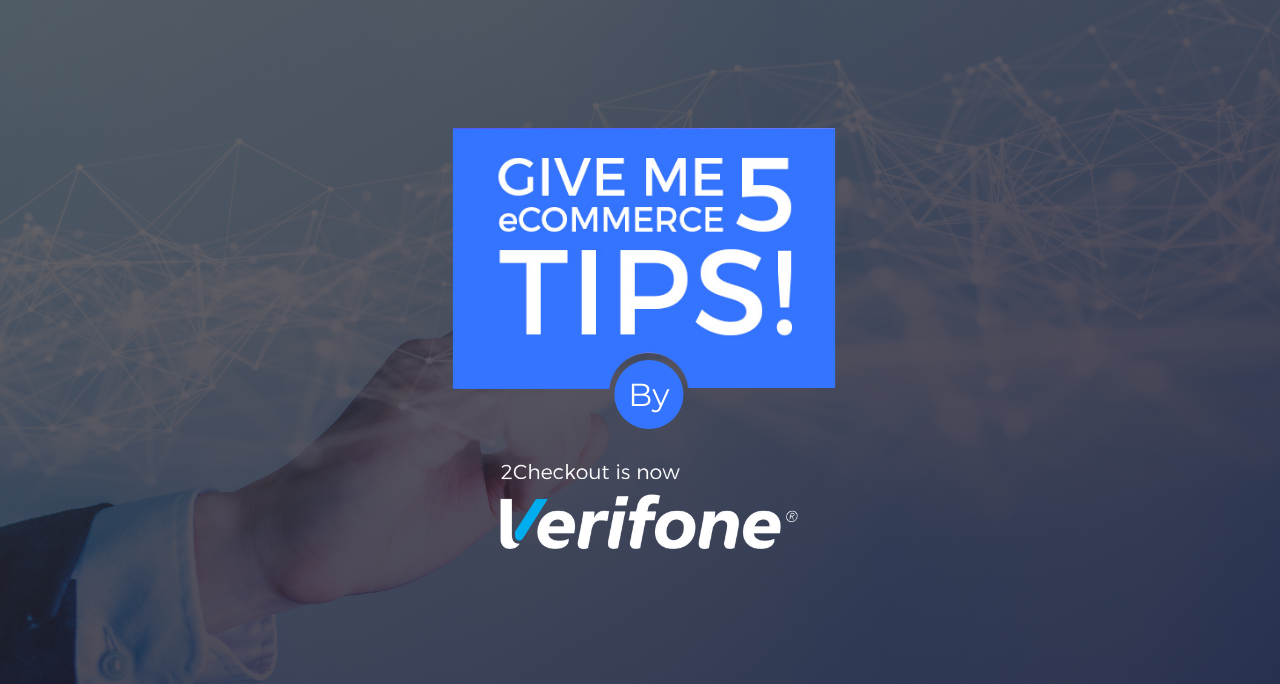Hi there, and welcome to our “Give me 5 Series!” where we share five useful eCommerce tips that will help improve your strategies and pave your way to success.
In our newest episode, Catalin Draghici, Product Owner at 2Checkout (now Verifone), discussed the importance of authorization rates. An authorization rate is the percentage of approved transactions that a merchant might receive during the authorization process.
Naturally, the higher your rates, the better! Even a small percentage increase in your authorization rates translates into considerable revenue gains.
This leads us to our five tips that we will share with you today for achieving high authorization rates:
1. Optimize Your Payment Flows
If you think about it, making their payment is the final step in your customer’s journey, so it needs to be easy, quick, and seamless.
Keep your payment or checkout page as simple as possible, and only include the most relevant information. This means payment details, the final price, and possibly add-ons that might enhance their purchase. And it goes without saying that responsive design is critical no matter what device the customer is using.
Of course, we all know that sometimes errors may appear. Having a system that spots and highlights missing or incorrect information before a customer attempts to finalize the purchase is very helpful. The page should also include a customer service chat or automated phone option if they need additional support.
2. Accept Different Payment Methods
Offering alternative payment methods like digital wallets can also boost your authorization rate. You won’t have to deal with lost, stolen, or expired cards, so there’s less chances for transactions to fail.
It’s also critical to offer localized payment options, like SEPA, Sofort, Bancontact or iDEAL. As an example, around 80% of iDEAL payments are authorized by the customer using their mobile banking app. This means lower friction, which then naturally leads to higher conversion rates.
Another thing to consider is accepting other payment methods like cryptocurrency or, for example, ‘Buy Now, Pay Later’ (BNPL), offered by companies such as Klarna. These can work really well for certain businesses and customers.
3. Manage Your Fraud Rates
We all know that fraud is out there, and that it comes in many forms. Fraud impacts authorization rates because, depending on the risk settings you set up to prevent fraud, this could also affect the volumes of transactions that are authorized.
High risk settings could result in declining well-intended shoppers, whereas low risk settings could open up the way for fraudulent transactions.
We recommend a combination of preventative steps, including validation keys, flagging negative customers, and device information. It’s also helpful if your team is trained to spot and prevent phishing attacks.
Taking these measures helps improve your authorization rate, getting rid of fraudsters without declining legitimate customers. And while we’re on the topic of knowing your customer, this brings us to tip number 4.
4. Improve Your Authentication Mechanisms
Using authentication processes is another good way to ensure your authorization rates go up. Having authentication in place is a good approach to knowing your customer and ensuring valid transactions are sent for authorization. It can also go a long way towards giving shoppers more peace of mind and bringing them closer to the conversion point.
When it comes to authentication, you have several options.
First, there’s tokenization, where your customer’s private data is turned into a token, which is made up of a random string of characters.
Multi-factor authentication is another option, where the customer is required to verify their identity in more than one way—usually via a password and a push notification.
Comparisons are an authentication step that simply compares your customer’s information to their bank’s information to confirm their validity.
Finally, validation keys can be very useful. These are phone calls, texts, or emails that give the customer a code to use that will confirm their identity.
5. Use a Reseller Model
What a lot of people don’t realize about authorization rates is that they are very influenced by the payment processors they work with. If you’re working with a Payment Service Provider, the transaction is processed based on the business’ location.
So, if you’re selling cross border with this type of provider, your authorization rates might not be as high as when using local processing, for example.
In contrast, online businesses who work within a reseller or a Merchant of Record model can really see their auth rates dramatically improve. Because an MoR works with local acquirers and processors, it’s more likely that the payment goes through and is approved.
There you are! You now have five key features to assess when thinking about how to improve the authorization rate for your online business.
Thank you so much for watching! If you have any questions or suggestions, feel free to share them in the comments section. We wish you good luck and see you next time with more innovative new tips!
Now that you’ve learned the best practices to improve your authorization rates, it’s time to start optimizing your checkout flow in order to hyperboost your online sales!
Check out our previous “Give me 5!” episode here to discover the five best practices that will help you optimize your checkout flow, boost your conversion rates, and ultimately drive more sales.






